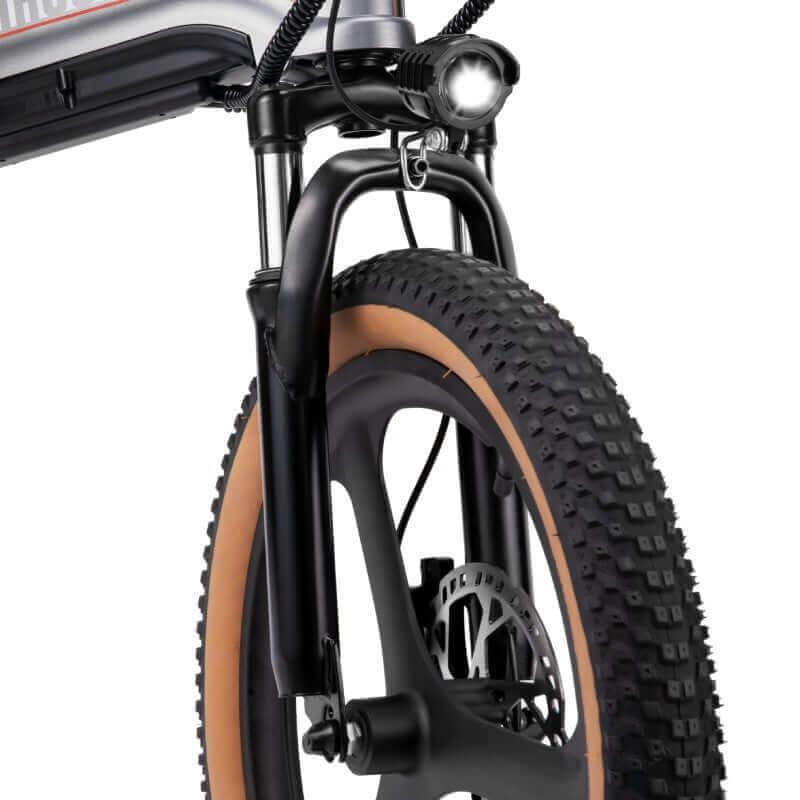As the dawn of electric bicycles (e-bikes) continues to rise, so does the debate about their safety. Everyone from passionate cyclists, environmental advocates, to health professionals have chimed in with their opinions. This article is intended to shed light on the pros, cons, and the potential dangers associated with electric bikes. We aim to answer the questions: "Are electric bikes safe?" and "What are the risks?".
The Ebike Book Search: An Overview
In the quest for understanding the true nature of e-bikes, many turn to literature for insights. While some books praise the benefits of e-bikes for fitness and the environment, others focus on the risks and safety precautions.
Notable reads include "The Electric Bike Book" by Jim Turner and "The Ultimate Guide to E-Bike Safety" by Michael Morley. Both books emphasize the importance of safety measures such as helmet use, obeying traffic laws, and maintaining your e-bike to ensure it remains a safe electric mode of transport.
Safe Electric: Are E-bikes Safe?
Indeed, electric bikes can be safe to ride if riders adhere to certain safety measures. They are equipped with features like bright LED lights, bell signals, and even advanced braking systems. Nevertheless, safety ultimately boils down to the rider's actions and awareness. Therefore, e-bike safety is more about responsible riding than the bike itself.
Are Electric Bikes Good for Exercise?
Yes, e-bikes can provide a great workout. Despite the electric assistance, riders still have to pedal, especially when tackling hills or headwinds. They encourage people who might otherwise avoid physical activity due to fitness levels, age, or disability to engage in exercise. That said, the intensity of the workout can vary based on the level of electric assistance used during the ride.
Electric Bike Safety: Crucial Aspects
The safety of an electric bike largely hinges on three main aspects: the rider, the bike, and the environment.
- The Rider: Riders need to follow traffic rules, wear appropriate safety gear, and always be aware of their surroundings.
- The Bike: Regular maintenance checks, functioning brakes, and working lights are all essential components of a safe electric bike.
- The Environment: Navigating through heavy traffic or poor road conditions can increase the risk of accidents.
Are Bikes Dangerous? A Comparative Analysis
Comparatively, traditional bikes and electric bikes pose similar risks. However, due to their increased speed, e-bikes might result in more severe injuries in case of accidents. A study published in the New York Times even linked e-bikes to a higher incidence of internal injuries.
Are Electric Bikes Dangerous?
While the use of e-bikes has been linked to certain risks, it is not accurate to label them as inherently dangerous. Like any vehicle, the danger level depends on factors such as the rider's behavior, bike condition, and the riding environment. The risk is usually higher when these factors are ignored.
E-bike Safety: Essential Tips
Here are some e-bike safety tips to keep you safe on the road:
- Wear a Helmet: Protecting your head is vital.
- Use Lights: Make sure your bike has working front and rear lights.
- Obey Traffic Rules:.Continuation to previous response.
Chapter 7: Are Electric Bikes Dangerous or Are They Merely Misunderstood?
Now, let's shift gears and touch upon the elephant in the room: are electric bikes dangerous? Well, there's no one-size-fits-all answer. It all boils down to how you handle and use the bike. Electric bikes are not inherently dangerous; it's reckless behaviour that leads to accidents.
For instance, if you try to pedal an e-bike that's too big for your size, you might end up not being able to balance it well, leading to accidents. Therein lies the danger, not in the bike itself. Always go for an electric bike that fits your size. This isn't just about comfort; it's a matter of safety.
And that brings us to another crucial point. Just like conventional bikes, e-bikes also require regular maintenance. If you ignore the bike's maintenance, it might result in malfunctions and accidents. So, keep a tab on the e-bike's condition and take it for regular check-ups.
For seniors, extra caution is required. Falling from a bike at a high speed can lead to serious injuries. As such, seniors must select e-bikes that offer stability and are comfortable to ride. At the same time, they should always adhere to safe riding practices.
Chapter 8: The Good, the Bad, and the Electric - Pros and Cons of Electric Bikes
Now that we've discussed safety let's talk about the pros and cons of electric bikes. E-bikes aren't all rainbows and unicorns; they do have their share of advantages and disadvantages.
Sub-chapter 8.1: The Advantages of Electric Bikes
E-bikes can be a great mode of transportation for many people, especially those who live in urban areas. They offer a multitude of benefits:
- Eco-Friendly: E-bikes are powered by rechargeable batteries, so they don't emit any harmful gases like cars or motorcycles do.
- Efficiency: With an electric bike, you can move through traffic more efficiently, especially during peak hours.
- Exercise: They can provide you with a decent amount of exercise, especially if you choose to pedal manually. In fact, some e-bikes come with a 'pedal-assist' mode that encourages you to pedal while also giving you a bit of an electric boost.
- Accessibility: E-bikes can also be more accessible to people with physical limitations that prevent them from riding a traditional bicycle.
Sub-chapter 8.2: The Disadvantages of Electric Bikes
On the other hand, electric bikes do have their drawbacks:
- Cost: The biggest con of an e-bike is its cost. They are often more expensive than regular bikes due to their motor and battery.
- Weight: They are heavier than conventional bicycles, making them harder to manoeuvre in some situations.
- Maintenance: E-bikes require more maintenance than regular bikes. In addition to standard bicycle maintenance, you'll need to care for the motor and battery.
- Battery Life: E-bike batteries have a limited life, and replacing them can be costly.
Chapter 9: The E-Bike Safety Guide - Staying Safe on the Road
Sub-chapter 9.1: Understanding E-Bike Safety
In order to ensure that you're safe while riding an e-bike, it's crucial to follow some safety guidelines. Wearing a helmet, using the bike's lights when visibility is poor, and following the traffic rules should be a given for every rider. Also, consider wearing high-visibility clothing to make sure you're easily visible to others on the road.
Sub-chapter 9.2: The E-Bike Rider's Gear
Protection is the key to ensuring safety while riding an e-bike. Wearing a helmet can greatly reduce the risk of serious head injuries in case of an accident. Choose a helmet that fits snugly, offers ample ventilation, and meets safety standards.
Next, consider wearing gloves. They not only offer protection but also provide better grip, which is important while handling an e-bike. Eye protection is another aspect you shouldn't ignore. A good pair of sunglasses will shield your eyes from dust, debris, and the sun's harmful UV rays.
Sub-chapter 9.3: The Rules of The Road
The most basic safety rule is to follow the traffic laws. Stop at red lights, use signals when turning, don't ride against traffic, and maintain a safe distance from other vehicles. Even if you are allowed to use bike lanes, always be vigilant about the traffic around you.
Remember, an e-bike is faster than a conventional bicycle. So, be cautious while overtaking other cyclists. Moreover, always yield to pedestrians. It's not just the law; it's also a matter of courtesy.
Sub-chapter 9.4: E-Bike Maintenance for Safety
Regular maintenance is not just about extending the lifespan of your e-bike but also about safety. Ensure your brakes are functioning properly, the tires are inflated to the correct pressure, and the lights are working fine.
The battery should also be in good condition. Follow the manufacturer's instructions on how to maintain it. Regularly check for any signs of wear and tear, especially in the motor and the wiring.
Chapter 10: The Future of E-Bikes
The future of e-bikes looks bright, with technological advancements aiming to make them safer, more efficient, and more affordable. Integrated GPS systems for navigation, self-diagnostic features for detecting mechanical issues, and improved battery technology for longer rides are just a few of the advancements we can expect in the coming years.
The potential for e-bikes to contribute to urban sustainability, by reducing congestion and pollution, is enormous. It's up to us to harness this potential and transition towards a more eco-friendly mode of transportation.
In conclusion, whether you're an urban commuter, a fitness enthusiast, a senior citizen, or simply someone who loves exploring the outdoors, e-bikes can add a new dimension to your experience. They are not just a fad; they are a testament to how technology can revolutionize our everyday lives. Enjoy the ride, but remember - safety first!








